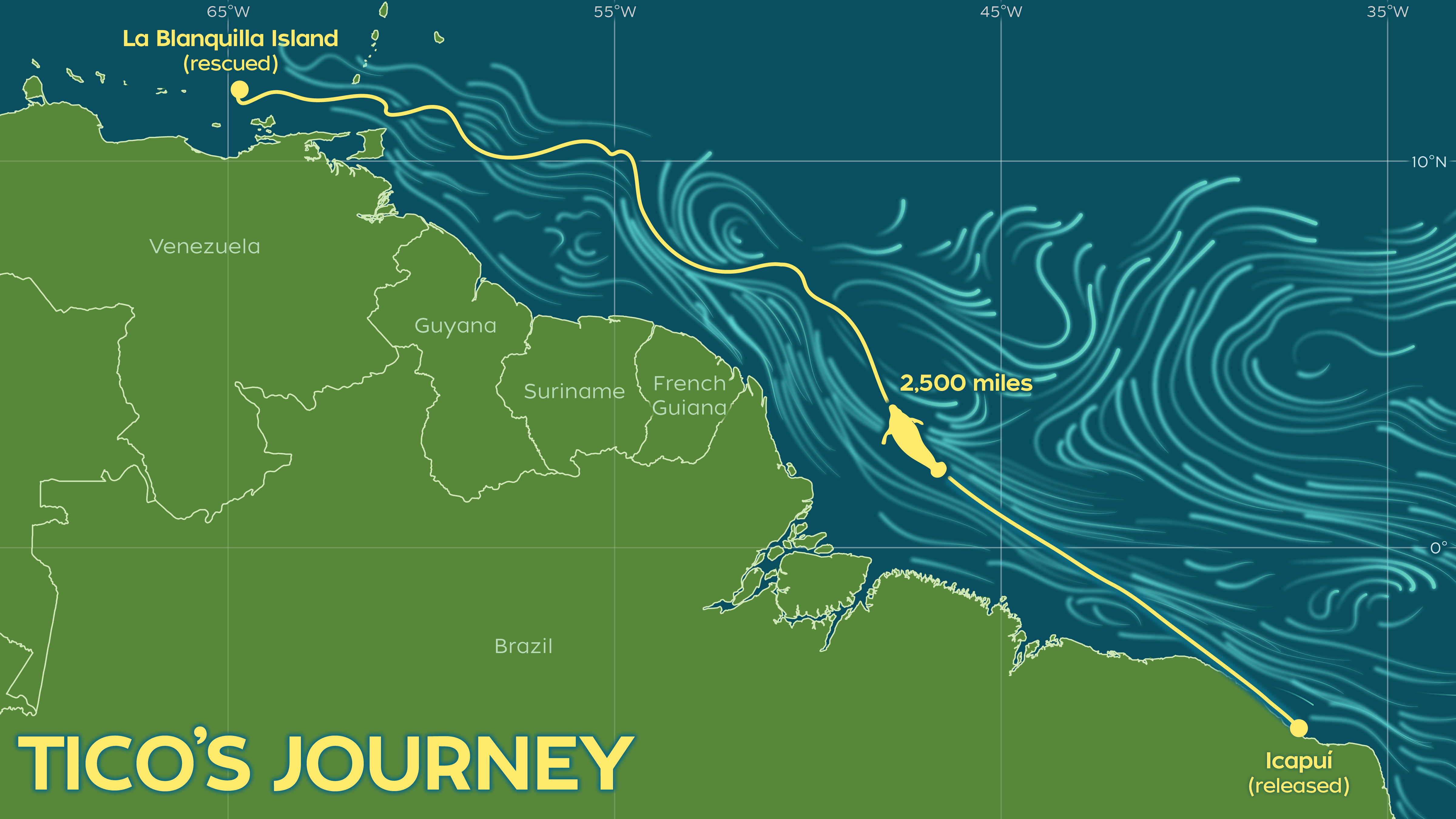Some animals need more help than others, and wild species can be rescued and returned to the wild after being nursed back to health. In some cases, they can even be recaptured after their release if they run into additional difficulties due to close monitoring. On that point, settle in folks – it’s time for the epic tale of Tico the manatee and his adventures in South America.
Tico is a West Indian manatee (Trichechus manatus) who was first rescued alongside his twin brother from Praia das Agulhas, Fortim, Ceará, Brazil, on October 15, 2014, after the newborns were both stranded.
When the brothers were rescued, they were taken to AQUASIS Marine Mammal Rehabilitation Centre. For years, Tico was fed and looked after by the team, moving to different enclosures that benefited him as he grew.
On July 6, 2022, after nearly eight years at the center, Tico was released back into the wild at Praia de Peroba, Icapuí, Ceará. Brazil. Before his release, he was fitted with a tag that contained both radio and GPS tracking technology, allowing the team to track Tico in the wild. He was also acclimatized to the waters in which he would be released.
After his release, however, things seemed to take an unusual turn. Initially, Tico stayed near the coast, but on the ninth day after his release, the tag data showed that Tico was over 300 kilometers (186 miles) from the release site, in a spot 40 kilometers (25 miles) from the coast. Since this was very unusual for a manatee, the team attempted a rescue, but Tico subsequently returned to the coast.
On day 12, he was found trapped in a fishing corral, but was checked over and then released uninjured. By August 5, Tico was in international waters around French Guiana having traveled more than 2,000 kilometers (1,243 miles) from the release site.
In total, Tico was monitored for 62 days, during which he swam over 4000 kilometers (2,485 miles) from Brazil around the coast to Venezuela, the longest documented travel by a West Indian manatee. The team following him was in contact with many different individuals and groups to try and keep watch on this immense journey.
Manatees have been known to swim long distances, but this journey represents the furthest ever documented as traveled by a West Indian manatee.
Image credit: Charin Park, © Woods Hole Oceanographic Institution
However, the pattern of his movements was considered erratic and would have led him away from sustainable feeding areas and freshwater, both of which are essential for manatee survival. Because of the speed and unusual characteristics of his movements, the team decided that the best thing to do would be to recapture Tico.
He was successfully captured on La Blanquilla Island, Venezuela, on September 5, 2022. He had lost 85 kilograms (187 pounds) of weight and was found to have a plastic bag in his digestive system, which was later removed.
“We received an unexpected email from two fishers near Tobago saying they had spotted a manatee with a tag; we thought it may have been Tico, and we were able to confirm it was in fact Tico. We were so happy, some of us cried,” said AQUASIS senior veterinarian Vitor Luz Carvalho in a statement.
“By the time Tico reached the Margaritas Islands in Venezuela, he was in poor physical condition. A crew was able to transport him to a local aquarium for the intensive care and rehabilitation he required.”
The speed and direction of Tico’s journey led the team to discover that Tico had been caught in the North Brazil Current (NBC), a fast-moving current that hugs the coast of South America.
“Studying his path, we can assume that Tico had a very tiresome journey,” said Woods Hole Oceanographic Institution (WHOI) Physical Oceanographer Iury Simoes-Sousa. “Based on simulations of past sea-state conditions and satellite data, it’s likely he encountered multiple violent storms. The two probable sources of freshwater available to him were the storms themselves and the diluted Amazon River plumes intersecting with the ocean currents.”
This information was critical in getting a license to bring Tico back to Brazil for more rehabilitation and care.
‘Without the additional perspective of Iury, I am not sure we would have gotten permission to bring Tico home,” said AQUASIS monitoring coordinator Camila Carvalho de Carvalho. “The data provided by an oceanographer was critical in being able to tell the full story of Tico’s incredible, and long, journey.”
The study is published in the Journal of the Marine Biological Association of the United Kingdom.
Source Link: Epic 4,000-Kilometer Journey Is Farthest Ever Traveled By A West Indian Manatee
